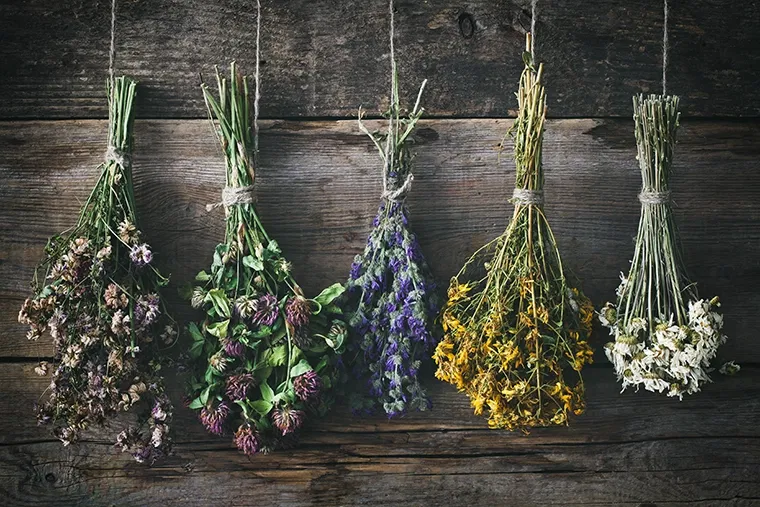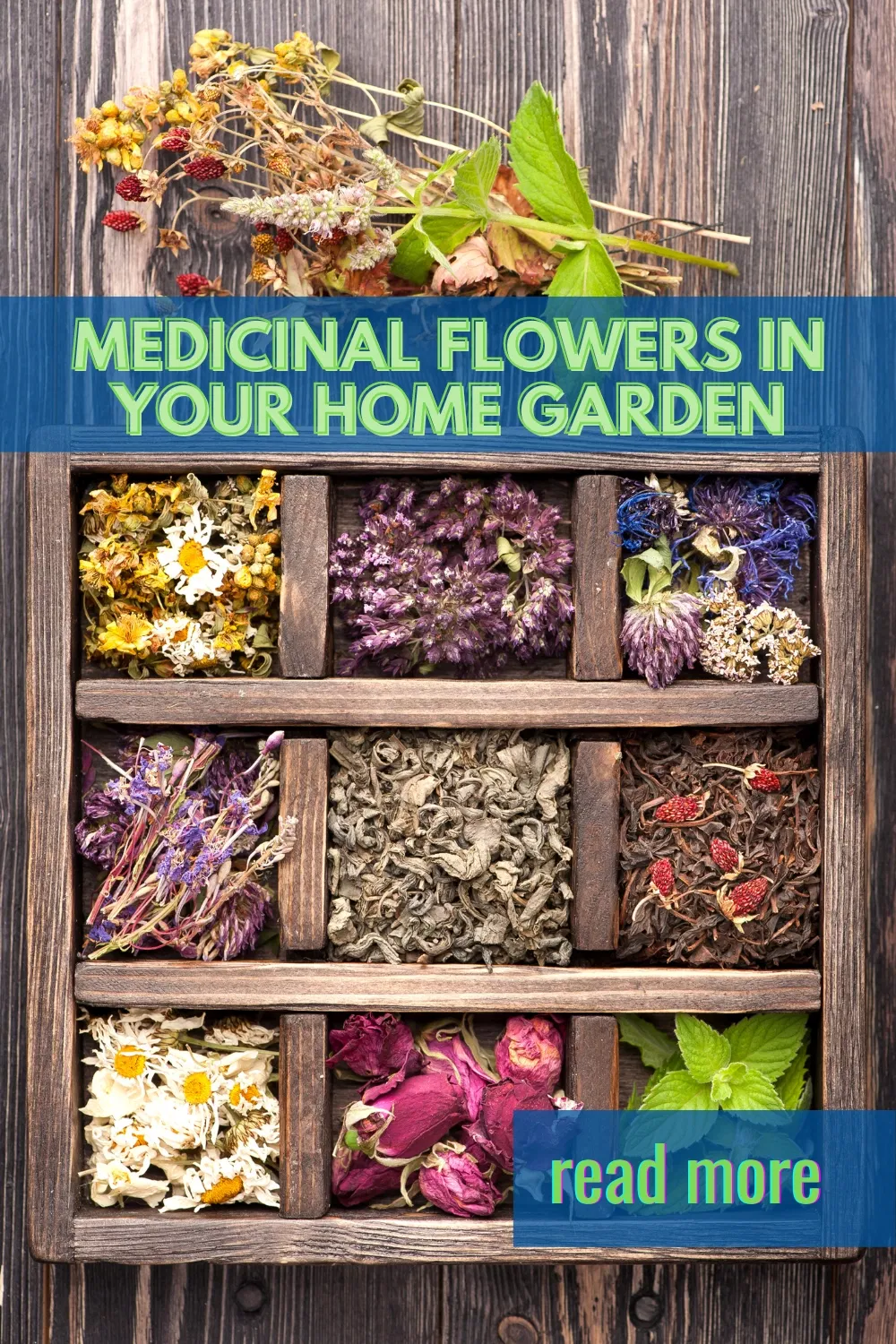Medicinal flowers are unique flowers used for centuries in traditional herbal medicine. They are not only beautiful, but they contain a variety of healing compounds that can be used to treat a wide range of ailments. In this article, we'll explore the benefits of medicinal flowers, the best flowers to grow in your home garden, and how to harvest and preserve them for optimal use. We'll also look at some recipes that use these flowers and some resources and courses for learning more about medicinal flowers.
What are medicinal flowers?
Medicinal flowers are plants that are used for their therapeutic properties. They are different from herbs as they contain more complex compounds and have a wider range of active ingredients. They are often used to treat various ailments, from skin conditions to digestive issues to mental health.
Flowers' medicinal properties come from various compounds, including flavonoids, terpenes, alkaloids, and glycosides. These compounds can be extracted to create various products, such as teas, tinctures, oils, and salves.
In addition to their healing properties, medicinal flowers are often very beautiful and can add great beauty to your home garden. They come in a variety of colors, shapes, and sizes and can be used to attract beneficial insects, birds, and butterflies to your garden.
Benefits of medicinal flowers
There are many benefits to growing medicinal flowers in your home garden. Here are some of the most important ones:
- Medicinal flowers can be used to treat a variety of ailments, both physical and mental. They contain compounds that can help to reduce inflammation, reduce pain, and boost the immune system.
- They are easy to grow and can be grown without artificial fertilizers and pesticides.
- Medicinal flowers are an attractive addition to any garden, adding color and interest to your landscape.
- They can attract beneficial insects, birds, and butterflies to your garden, which can help to keep pests away.
- Growing medicinal flowers can help create a more sustainable garden, as you can use them for medicinal purposes rather than buying manufactured products.
Best medicinal flowers for your home garden
Many different types of medicinal flowers can be grown in your home garden. Some of the most popular and easy to grow are:
- Calendula (Calendula officinalis): Calendula is a bright yellow or orange flower with anti-inflammatory and antiseptic properties. It is often used as a remedy for skin conditions such as eczema, acne, and dryness.
- German Chamomile (Matricaria recutita): German chamomile is a small white flower with a sweet, apple-like scent. It is a mild sedative that can promote relaxation and reduce stress.
- Lavender (Lavandula angustifolia): Lavender is a beautiful purple flower with a calming, soothing scent. It can be used to treat headaches, insomnia, and anxiety.
- Lemon Balm (Melissa officinalis): Lemon balm is a fragrant, lemon-scented herb with various medicinal properties. It can improve digestion, reduce stress, and boost the immune system.
- Echinacea (Echinacea purpurea): Echinacea is a purple flower often used to treat colds and flu. It can also be used to reduce inflammation and boost the immune system.

Medicinal Garden Flowers
Growing medicinal flowers in the home garden
Growing medicinal flowers in your home garden is relatively easy. Here are some tips for getting started:
- Choose the right site: Select a spot in your garden that receives at least six hours of direct sunlight daily.
- Prepare the soil: Make sure that the soil is well-drained and has a pH of 6.5 to 7.0.
- Plant your flowers: Plant them in groups of three or more and keep them away from other plants, as they need plenty of space.
- Water regularly: Make sure to water your medicinal flowers regularly, as they need plenty of water to thrive.
- Fertilize: Feed your medicinal flowers a balanced fertilizer once a month to ensure optimal growth.
Harvesting and preserving medicinal flowers
Once your medicinal flowers are ready to be harvested, it is important to do so at the right time. For best results, harvest your flowers when they are in full bloom. Cut the flowers off the stem and use them immediately, or store them in a cool, dry place for later use.
You can also preserve your medicinal flowers for later use. Drying them is the most common way of preservation, as it allows you to store the flowers for an extended period of time. You can dry your flowers in a dehydrator or the oven or hang them upside down in a well-ventilated area for several weeks.
How to use medicinal flowers
Once your medicinal flowers are harvested and preserved, there are a variety of ways in which you can use them. Here are some of the most common ways to use medicinal flowers:
- Tea: You can use your dried flowers to make a soothing herbal tea. Simply steep the flowers in hot water for five minutes, strain, and enjoy.
- Tinctures: You can also make a tincture with your flowers by soaking them in alcohol or glycerin for several weeks. This can be a great way to extract the active compounds of the flowers and store them for later use.
- Oils: You can also infuse your flowers in oil to create a healing salve or oil for topical use.
- Syrups: You can make medicinal syrup by boiling your flowers in honey or sugar water. This can be a great way to sweeten up the taste of your medicinal flowers.
Possible side effects of medicinal flowers
Although medicinal flowers are generally safe to use, it is important to remember that they can have some side effects. The most common side effects include skin irritation, dizziness, headache, and nausea. If you experience these symptoms, discontinue use and seek medical advice.
It is also important to remember that medicinal flowers should not be used in place of professional medical advice. Even if you use them for their healing properties, it is always best to consult your doctor or healthcare provider.
Recipes with medicinal flowers
Medicinal flowers can be used to make a variety of delicious recipes. Here are some of our favorite ideas:
- Lavender Lemonade: Combine freshly squeezed lemon juice, sugar, and dried lavender flowers for a refreshing summer drink.
- Calendula Infused Honey: Infuse honey with dried calendula flowers for a sweet, healing syrup.
- Chamomile Tea: Make a soothing tea with dried chamomile flowers and your favorite herbs.
- Rose Petal Jam: Make a sweet jam with rose petals and sugar for a unique spread.
- Echinacea Tea: Create a healing tea with dried echinacea flowers and your favorite herbs.
Medicinal flower resources and courses
Various resources and courses are available if you’re interested in learning more about medicinal flowers. Here is one of our top picks:
- Click on the button below to get this amazing medicinal garden starter kit with a free guide included. Start this natural organic garden in your backyard today and start taking care of your health naturally. Medicinal Garden Kit was created by Nicole Apelian, Ph.D.
Conclusion
There are many benefits to growing medicinal flowers in your home garden. Not only do they add beauty and interest to your garden, but they also contain healing compounds that can be used to treat various ailments. Following the tips and resources in this article, you can unlock the healing power of medicinal flowers in your home garden.

